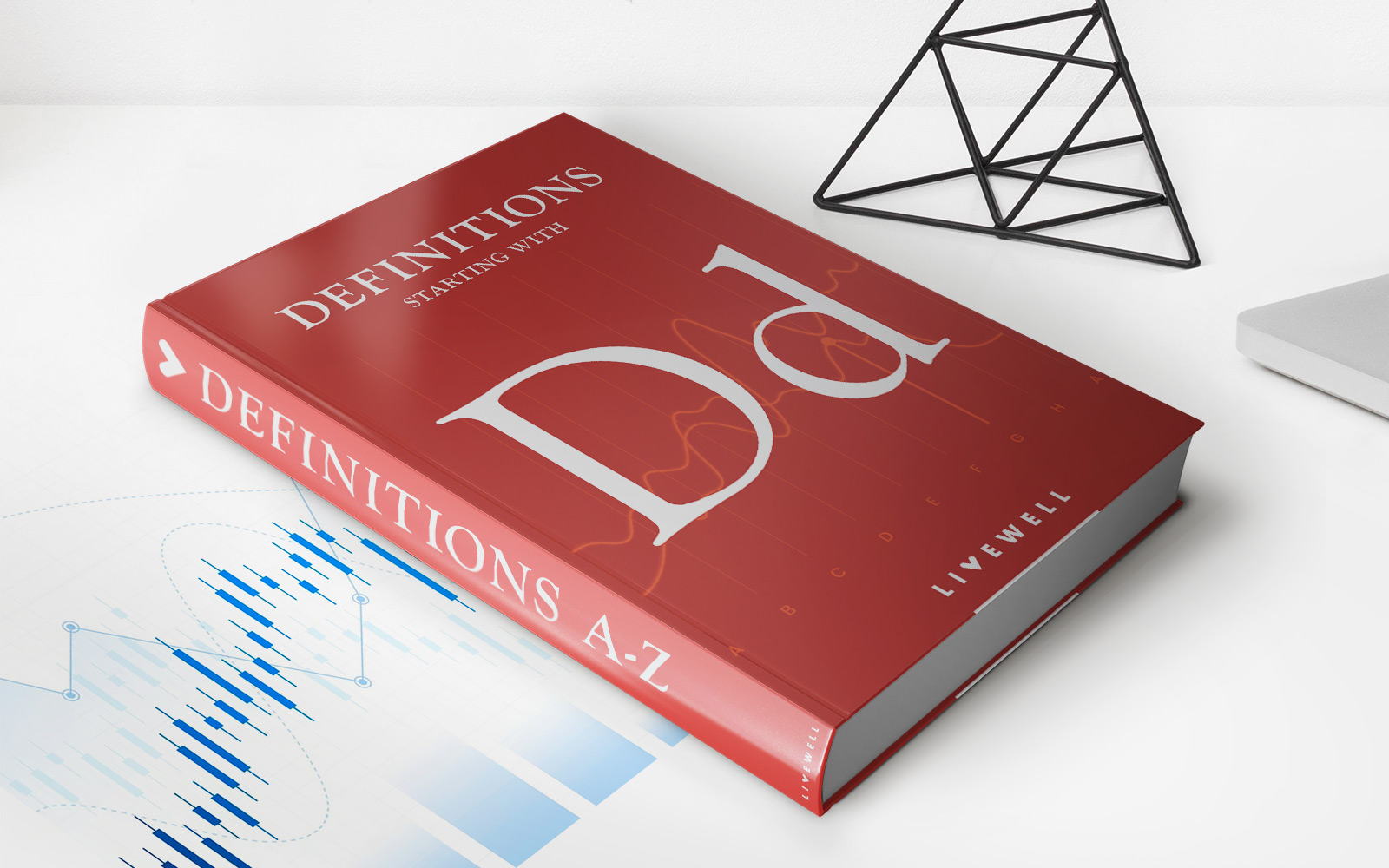

Finance
How Much Does A Frozen Pension Grow Each Year
Published: November 27, 2023
Discover how frozen pensions can grow each year and maximize your retirement finance. Learn about the potential growth rates and make informed decisions.
(Many of the links in this article redirect to a specific reviewed product. Your purchase of these products through affiliate links helps to generate commission for LiveWell, at no extra cost. Learn more)
Table of Contents
Introduction
Welcome to the world of pensions where the financial security of our future rests in the hands of careful planning and investment. Among the many types of pensions, a “frozen pension” is a term that often leaves people curious. If you’ve ever wondered about how much a frozen pension grows each year, you’re in the right place.
A frozen pension refers to a pension plan that is no longer actively contributed to by an individual but continues to be held in the pension scheme until retirement age. This can occur when someone leaves a job and moves on to another company, or when they become self-employed. Frozen pensions are typically held in a separate account and are not actively invested or contributed to, hence the term “frozen.”
Understanding how much a frozen pension grows each year is crucial for those who have had their pensions frozen. It gives them the information they need to plan for a secure retirement and make informed decisions about their financial future.
In this article, we will explore the various factors that affect the growth of frozen pensions, historical growth rates, current growth rates, the impact of inflation, and considerations for pension holders. By the end, you’ll have a comprehensive understanding of how frozen pensions grow and the factors that influence their growth.
Understanding Frozen Pensions
A frozen pension is a type of pension that has been discontinued or “frozen” when an individual leaves a job or switches employers. It refers to a pension plan that stops receiving contributions from both the employee and the employer, but still remains intact and invested until the individual reaches retirement age.
When a pension becomes frozen, the funds are typically transferred to a separate account called a “preserved” or “deferred” pension. These funds are then invested in the market, allowing them to potentially grow over time. The growth of a frozen pension depends on various factors, which we will discuss in more detail later on.
One important thing to note is that a frozen pension will still be subject to the rules and regulations set by the pension scheme. This means that the pension provider will determine how the funds are invested and what growth rates can be expected. If you have a frozen pension, it is crucial to understand the terms of your pension scheme, as they will have a direct impact on the growth and future value of your pension.
Although a frozen pension is no longer actively contributed to, it still holds considerable value and can contribute to your overall retirement income. It is important to keep track of your frozen pension and regularly review its growth to ensure you are on track for a secure retirement.
Now that we have a basic understanding of what a frozen pension is, let’s delve into the factors that can affect the growth of a frozen pension.
Factors that Affect Frozen Pension Growth
Several factors can influence the growth of a frozen pension. Understanding these factors can help pension holders make informed decisions and better plan for their retirement. Here are some key factors that affect frozen pension growth:
- Investment Performance: The performance of the investments made with the frozen pension funds is a significant factor in determining its growth. If the investments perform well, the pension fund may experience substantial growth. However, poor investment performance can lead to stagnation or even a decrease in the value of the pension.
- Market Conditions: The overall state of the financial markets can impact the growth of a frozen pension. Economic factors such as inflation rates, interest rates, and stock market performance can have a significant influence on the value and growth of the pension fund.
- Pension Scheme Policies: Each pension scheme has its own set of policies and rules that govern how pension funds are invested and managed. These policies can vary widely, and some schemes may have more favorable growth rates than others. It’s essential to understand the specific policies of your pension scheme to determine how they may affect your frozen pension’s growth.
- Contribution Levels: While a frozen pension is no longer actively contributed to, the contributions made during the active phase of the pension can still impact its growth. Higher contribution levels during your employment can result in a larger pension fund, which may lead to greater growth potential over time.
- Administrative Fees: The fees charged by the pension scheme provider can also influence the growth of a frozen pension. Higher administrative fees can eat into the investment returns and reduce the overall growth of the pension fund. It is important to be aware of the fee structure and evaluate if they are reasonable for the services provided.
These factors are not exhaustive, and there may be other elements specific to your individual pension scheme that can impact its growth. It is crucial to stay informed and regularly review your frozen pension’s performance to ensure that you are maximizing its growth potential.
Historical Growth Rates of Frozen Pensions
Looking at historical data can provide valuable insights into the growth rates of frozen pensions. While it’s important to remember that past performance does not guarantee future results, examining historical growth rates can give us a rough estimate of how frozen pensions have performed over time.
The growth rates of frozen pensions can vary widely depending on several factors, including the investment strategies employed by the pension scheme and the overall performance of the financial markets during a specific period. In some cases, frozen pensions may have experienced significant growth, while in others, the growth may have been more modest.
It’s important to note that historical growth rates can be influenced by various factors, including economic conditions, changes in pension scheme policies, and external events such as recessions or market downturns. Therefore, it is essential to understand that past performance does not necessarily predict future growth rates.
That being said, historical growth rates of frozen pensions have typically ranged between 5% and 8% per annum. This range takes into account the average growth rates experienced by different pension schemes over several years.
However, it’s important to remember that these figures are averages and may not reflect the growth rates of every individual frozen pension. The specific terms and policies of your pension scheme will play a significant role in determining the growth rate of your frozen pension.
Moreover, historical growth rates may not account for the impact of inflation. It’s crucial to consider the effects of inflation on the purchasing power of your frozen pension’s growth over time. Inflation can erode the value of your pension, reducing its real growth potential.
Given the various factors that can influence the growth rates of frozen pensions and the unique characteristics of each pension scheme, it’s essential to consult with a financial advisor or pension expert. They can provide personalized insights based on your specific situation and help you make informed decisions regarding your frozen pension.
Current Growth Rates of Frozen Pensions
Understanding the current growth rates of frozen pensions is vital for pension holders to plan effectively for their retirement. The growth rates can vary depending on several factors, including the performance of investments, market conditions, and the specific policies of the pension scheme. However, it’s important to note that growth rates can fluctuate over time and may be subject to economic volatility.
As of the most recent data available, the current growth rates of frozen pensions tend to range between 3% and 6% per year. These rates reflect the overall performance of pension funds in different schemes and take into account factors such as investment returns and prevailing economic conditions.
It’s important to remember that these growth rates are not uniform across all pension schemes. Each scheme may have its own set of investment strategies and policies, which can result in variations in the growth rates of frozen pensions. Some schemes may offer more aggressive investment strategies, potentially resulting in higher growth rates, while others may have more conservative approaches, leading to lower growth rates.
Additionally, market conditions play a significant role in determining the current growth rates of frozen pensions. Factors such as interest rates, inflation, and stock market performance can all impact pension funds’ returns and ultimately influence the growth rates.
Pension holders also need to consider the impact of fees and charges on the growth of their frozen pension. Administrative fees and investment management fees can eat into the overall returns, affecting the actual growth rate experienced by the pension fund. Therefore, it’s crucial to carefully review the fee structure of your pension scheme and understand their impact on your frozen pension’s growth.
It’s worth noting that the growth rates of frozen pensions should be evaluated in relation to inflation. Inflation can erode the purchasing power of your pension growth over time. Therefore, it’s important to assess the real growth of your frozen pension by adjusting for the rate of inflation.
To get accurate and up-to-date information on the current growth rates of your frozen pension, it is recommended to review the annual statements provided by your pension scheme provider. Alternatively, you can seek the guidance of a financial advisor or a pension expert who can offer personalized insights based on your specific pension scheme and current market conditions.
Effects of Inflation on Frozen Pension Growth
Inflation can have a significant impact on the growth of frozen pensions. It is crucial to understand how inflation affects the purchasing power of your pension and how it can impact your retirement plans.
When we talk about the growth of a pension, it’s important to consider both nominal growth and real growth. Nominal growth refers to the actual percentage increase in the value of your pension, while real growth takes into account the impact of inflation. Inflation is the general rise in prices of goods and services over time.
If the growth rate of your frozen pension is, for example, 5%, but the inflation rate is 3%, then the real growth rate of your pension is only 2%. In other words, while your pension may be growing in nominal terms, its purchasing power is not growing as much when adjusted for inflation.
The impact of inflation on frozen pension growth can be particularly significant over the long term, as the cumulative effect of inflation can erode the true value of your pension. Over time, prices of goods and services tend to increase, reducing the purchasing power of your pension if it does not keep pace with inflation.
For example, let’s say you plan to retire in 20 years, and your frozen pension is growing at an average rate of 6% per year. However, the average inflation rate during that period is 3%. Although your pension may appear to be growing by 6% annually, its real growth, when adjusted for inflation, is only 3%. This could potentially impact your ability to maintain your desired standard of living in retirement.
It’s essential to consider the effects of inflation when evaluating the growth of your frozen pension and planning for your retirement. Here are a few steps you can take to mitigate the impact of inflation:
- Regularly review your pension: Stay informed about the performance of your frozen pension and evaluate its growth in relation to inflation. Regularly reviewing your pension statements can help you track its real growth and make necessary adjustments to your retirement plans.
- Consider inflation-beating investments: Explore investment options that have the potential to outpace inflation. Investments such as stocks, real estate, and inflation-indexed bonds may offer opportunities to preserve and potentially increase the purchasing power of your pension over time.
- Consult with a financial advisor: Seek guidance from a financial advisor who can provide personalized advice based on your specific pension scheme and retirement goals. They can help you navigate the impact of inflation and develop a solid retirement strategy.
- Stay updated on economic trends: Keep an eye on economic indicators, inflation forecasts, and market trends to anticipate and mitigate the impact of inflation on your frozen pension. Being aware of economic conditions can help you make informed decisions regarding your retirement savings.
By considering the effects of inflation and taking proactive measures, you can better plan for the future and ensure that your frozen pension retains its purchasing power throughout your retirement years.
Considerations for Pension Holders
As a pension holder with a frozen pension, there are several important considerations to keep in mind when it comes to your retirement planning. Understanding and addressing these factors can help you make informed decisions and maximize the potential of your pension. Here are some key considerations for pension holders:
- Review your pension scheme: Take the time to thoroughly understand the terms and policies of your frozen pension scheme. Familiarize yourself with the growth rates, investment strategies, and any applicable fees or charges. Knowing the specifics of your pension scheme will help you gauge the potential growth and the overall value of your pension over time.
- Stay informed about pension regulations: Keep up to date with any changes in pension regulations and legislation. This includes understanding your rights as a pension holder, potential eligibility for pension boosts or increases, and any changes in the minimum pension age or retirement age. Staying informed about regulations will ensure that you make the most of your pension and retirement benefits.
- Regularly review pension performance: It’s essential to regularly review the performance of your frozen pension. Monitor the growth rates, investment returns, and any changes in the market conditions that may impact your pension fund. Regularly reviewing your pension will allow you to assess whether your pension is on track to meet your retirement goals and make any necessary adjustments to your financial plan.
- Consider seeking professional advice: If you are unsure about the best course of action for your frozen pension, it may be beneficial to consult with a financial advisor or pension expert. They can provide personalized guidance based on your specific situation and help you make informed decisions regarding your pension, investments, and retirement planning.
- Explore pension consolidation: If you have multiple pension schemes from previous employments, you may consider consolidating them into a single pension. Consolidation can help simplify your retirement planning and provide a clearer picture of your overall pension value. However, it’s important to carefully assess the potential benefits and drawbacks of consolidation before making any decisions.
- Consider other retirement savings options: While your frozen pension is an important part of your retirement savings, it may not be the only source of income. Explore other retirement savings options, such as Individual Retirement Accounts (IRAs) or personal investment accounts, to diversify your retirement savings and provide additional financial security in your retirement years.
By considering these factors and staying actively engaged with your frozen pension, you can make informed decisions and optimize the growth potential of your pension. Regularly reviewing your pension, staying informed about regulations, and seeking professional advice when needed will help you navigate the complexities of retirement planning and ensure a financially secure retirement.
Conclusion
A frozen pension holds significant value in shaping our financial future. Understanding how much a frozen pension grows each year is crucial for pension holders to plan effectively for retirement. While the growth rates of frozen pensions can vary depending on several factors, including investment performance, market conditions, and pension scheme policies, it is important to consider both nominal and real growth rates when evaluating the true value of your pension.
Historically, frozen pensions have experienced growth rates ranging between 5% and 8% per year. However, it’s important to note that past performance does not guarantee future results, and the growth rates of frozen pensions can fluctuate over time. It is recommended to refer to your pension scheme provider for the most accurate and up-to-date information on current growth rates.
Inflation is a crucial factor to consider when evaluating the growth of a frozen pension. Inflation can erode the purchasing power of your pension’s growth over time, impacting your standard of living in retirement. Regularly reviewing your pension, considering inflation-beating investments, and staying informed about economic trends are ways to mitigate the effects of inflation on your frozen pension.
As a pension holder, it’s important to review your pension scheme, stay informed about pension regulations, regularly evaluate pension performance, seek professional advice when needed, consider pension consolidation, and explore other retirement savings options. By taking these considerations into account, you can make informed decisions and optimize the growth potential of your frozen pension.
Remember, planning for retirement requires careful attention and ongoing evaluation. Regularly reviewing your pension’s growth and staying informed about market trends and regulations will help you make the necessary adjustments to secure a comfortable and financially stable retirement.
In the end, a frozen pension can play a significant role in providing financial security in your retirement years. By understanding the growth rates, considering the impact of inflation, and making informed decisions, you can make the most of your frozen pension and pave the way for a prosperous future.














